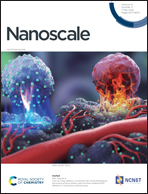Sulfur edge in molybdenum disulfide nanosheets achieves efficient uranium binding and electrocatalytic extraction in seawater†
Abstract
Electrochemical extraction of uranium in seawater provides a promising strategy for the persistent supply of fuel in the nuclear industry. However, current operation voltage for the electrochemical extraction of uranium in seawater generally requires a high applied voltage (∼−5 V). Herein, we constructed S-terminated MoS2 nanosheets with abundant electrochemically active S-edge sites for efficient binding and reduction of uranium. In 100 ppm of uranium-spiked seawater at an applied voltage of −3 V, the S-terminated MoS2 nanosheets exhibited a considerable extraction capacity of 1823 mg g−1. After 30 min electrolysis in 100 mL of real seawater with 100 times concentrated uranium (330 ppb), the extracted uranium (29.5 μg) consumes electricity of 8.7 mW h. Moreover, we concentrated 12 L of real seawater (3.3 ppb) into 20 mL of aqueous solution containing 1752.6 ppb U by adding a reverse potential. In the mechanistic study, we directly observed the uranium clusters and single atoms confined by the S-edge at atomic resolution, which served as the intermediate and accounted for the boosted uranium extraction in seawater.



 Please wait while we load your content...
Please wait while we load your content...